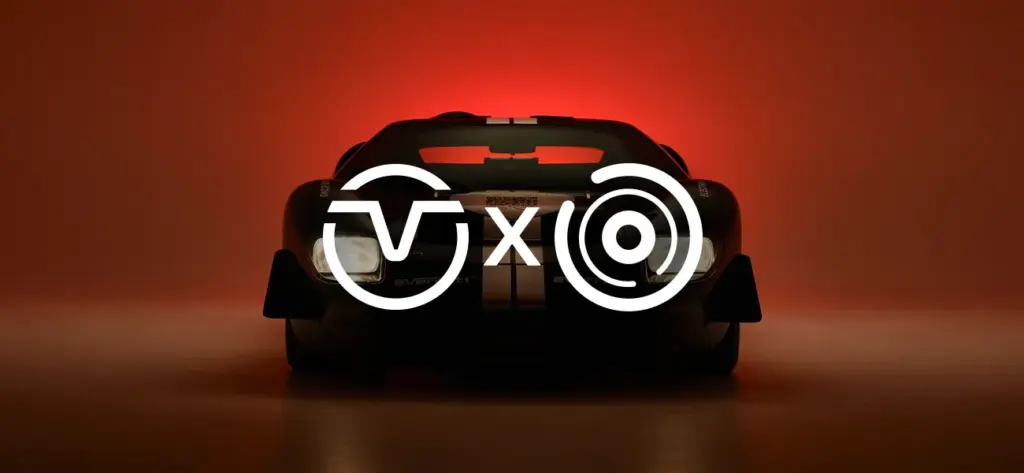This UK-based EV conversion company took the Holy Grail of American ICE sports cars, and made it suitable for modern-day racers—so we tried the prototype.
Old cars, no matter which way you look at it, pollute far more than new ones on the move—especially more than EVs with zero tailpipe emissions. The world is going electric, and being seen to be pro-ICE can get you funny looks in certain circles.
Conceivably there’s a future where driving ICE (internal combustion engine) cars will be immensely difficult, not just financially, but socially too. However, the thing is, classic cars remain sought-after things. The shapes, the feel, the drive—it all adds up to a visercal experience that millions enjoy or lust after.
It’s precisely because of this that an industry of small companies has sprung up to electrify traditional ICE vehicles—sports cars, sedans, garbage trucks, you name it—giving a new lease of life, or at least a different one, to some truly iconic vehicles. This is where the small UK-based company Everrati made its start. First with a Mercedes SL “Pagoda,” and far more pointedly with a 964 generation Porsche 911. That second car was enough to upset Porsche people, who are rabidly protective of their favorite car—removing its iconic engine and replacing it with batteries was a step too far. Which is a shame, because it’s a very good bit of kit.
Now Everrati has turned its electric attention to another legendary car: the GT40. Built by Ford to beat Ferrari at Le Mans in the 1960s, the GT40 is a sort of automotive deity. The idea of removing one of the few original’s V8s in favor of electricity is beyond the pale to purists, and not something Everrati’s game for. Instead, it has teamed up with Superformance, a US-based company that has the rights to the tooling for the original car, and produces “continuation models” as new versions, basically. Where Superformance will sell you a V8-powered car, Everrati has taken a rolling shell and figured out how to put its own electric powertrain inside.
Ryan Worthington, Everrati’s design engineer, explains: “The first step for us is to 3D-scan the entire chassis, which allows us to create a CAD model to start a packaging, exercise, and feasibility study. That lets us see how much power we can fit in it, in terms of battery capacity, without going over any gross vehicle mass allowance or drastically changing the weight distribution—also without changing the chassis. We want it to handle the same as the original car, to have the same characteristics. If you change too much you lose that.”
Once the car had been scanned, measurements taken, and a powertrain selected, it was time for testing. Lots of it. Justin Lunny, Everrati’s founder and CEO, is bullish about how much work goes into each car. They’re not cheap: The GT40 will retail for £440,000 plus local taxes ($540,000) when it goes to market, and that, says Lunny, is due to how much it costs to get it right. Keep in mind, though, that an original GT40 will set you back just shy of $10 million.
“We spend the money, invest everything in it, then get it 100 percent right before we build another one. When it comes to engineering, we do everything an OEM would do when launching a new vehicle, or powertrain—albeit in a shortened timeframe,” says Lunny. “That’s what sets us apart [from other EV conversion manufacturers], the whole ethos around truly developing the cars. Thousands of hours of development go into each one.” Indeed, shortly after my time driving the company’s single prototype GT40, it was heading to the US for hot-weather testing in Death Valley.
When it comes to powertrains, Everrati doesn’t have a one-size-fits-all policy. For its upcoming electric Land Rover Defender conversions, it makes no sense to opt for something suitable for a rear-drive, mid-engined sports car like a GT40. Each application is suited to its use case.
The original GT40 is, for petrolheads, a thing of wonder. Fitted with engines up to 7.0-liters, and fearsomely good on track, they provide thunderous noise and equally affecting thrills. Superformance’s versions aren’t quite as rudimentary as the original racers, yet they can still come with 5.8-liter V8s and as hardcore a setup as you’d like. Everrati’s version will, when it’s out of the prototype stage, come with an 800-bhp, 590 lb-ft setup attached to a 60-kWh battery, giving it a potential range of more than 125 miles. Zero to 62 mph is set to be sub-4.0 seconds, and the top end will be the fun side of 125 mph. It’ll take an 80-kW CCS fast-charger, too, getting from 20 to 80 percent in 45 minutes.
Any thoughts of fast-charging equalling practicality are erased, however, when you try to get into the thing. The “40” in the GT40’s name is a reference to how high it is off the ground: just 40 inches (just over 100 cm). It comes with high sills, in this case full of batteries, and a tiny door that brings a bit of the roof with it. If you’re much over 6 feet tall, you’ll certainly struggle to get in with any grace.
Once you’re inside, Everrati’s trim work is a joy to behold. Even with a couple of extra safety switches (such is the nature of a prototype), the leather is stunning and beautifully stitched. But for the asking price, you’d damn well hope so. The pedal box is tiny, so big shoes are best avoided if you don’t want to mash both pedals together. (You don’t want that.)
There’s not much by way of toys. Its dials, once used for things like oil pressure, revs, fuel, and other grubby things, are repurposed to show more appropriate data such as charge levels. They’re all pointed towards the driver, while any passengers (if they’ve managed to squeeze in) can only catch a fleeting glance.
As you’d expect, the manual gear lever is gone, replaced by a simple lever to shift from drive to neutral to reverse. Pop your foot on the brake, slot it in to drive, and slowly give the throttle a nudge. The power delivery is smooth, though Everrati has still to finalize the car’s mapping, and even in 650-bhp form (800 bhp is on the way) savagely quick.
On Everrati’s test runway/track (the car is not quite road-legal yet), it’s simply a matter of pointing the EV at the other end, applying pressure to the pedal on the right and fighting g forces until you get to the other end. At full chat, it’s a savage thing to get to grips with. Not as savage as, say, a Rimac Nevera, but that comes with more than twice the power, four driven wheels, and a £2 million price tag.
What gets you is how easy it is to drive slowly—something that’d be a little unnerving in the petrol GT40, as you wrangle a clutch connected to a whacking great V8. Just be gentle with your inputs and it glides easily. Its brakes aren’t quite in the same ballpark, nor is the steering. Both are unassisted, in true hardcore sports-car style, so you’ll need to have a strong right leg and be keen on press-ups to get the best out of it.
In its prototype form, there are a few things still to iron out. Everrati’s still working on getting it up to its full power, for example, and the company’s adaptive suspension is yet to be fitted, allowing the car to change its footing depending on driver preference—you’ll be able to have it “soft” for road use and “hard” for better cornering on track.
As it stands, there’s not a huge amount of choice for people looking for an electric two-seater sports car. Sure, Polestar’s upcoming 6 will step into that gap, and if you have millions to spend there’s the Nevera, Evija, Battista hypercars. But other than that, there’s not much out there. You could wait for the 2025 next-gen electric Boxster, of course. Otherwise, converted classics are one option, and if you can afford it, the GT40 seems a smart way to go. It’s a new car that looks very much like an old car. It doesn’t fire particulates at passersby, yet it manages to recreate the excitement of ICE power. It just needs a little more time to cook.
Source: Wired






